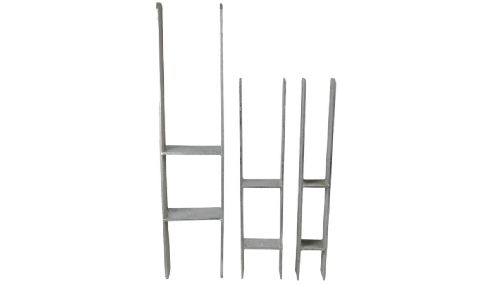fitting trailer leaf springs
8 月 . 28, 2024 23:49
Fitting Trailer Leaf Springs A Comprehensive Guide
Trailer leaf springs play a crucial role in ensuring the proper functioning and stability of trailers. They support the weight of the trailer and its cargo, providing a smooth ride and enhancing safety on the road. Proper fitting and maintenance of leaf springs are vital for optimal performance. In this guide, we'll explore the importance of leaf springs, common issues, and steps for successful fitting.
Understanding Leaf Springs
Leaf springs are a type of suspension system made up of multiple layers of flexible steel, or “leaves,” that are stacked on top of each other. When weight is applied, the leaves bend and compress, allowing the axle to move up and down while keeping the trailer balanced. This design absorbs shocks from the road, maintaining stability and comfort during transportation.
Importance of Proper Fitting
Fitting trailer leaf springs correctly is essential for several reasons. Firstly, improperly fitted springs can lead to uneven weight distribution, which can affect towing dynamics and result in swaying or fishtailing. Additionally, misalignment can cause excessive wear on tires, leading to premature replacement and increased maintenance costs.
A well-fitted leaf spring ensures that the trailer handles loads effectively, minimizing the risk of accidents. Moreover, correctly installed leaf springs enhance the longevity of the suspension system, ultimately leading to better performance over time.
Common Problems
Several issues can arise if leaf springs are not fitted correctly. Some common problems include
1. Sagging Springs Over time, leaf springs can sag due to wear or continuous heavy loads. This can lead to decreased towing capacity and a rough ride.
2. Cracks and Breaks Insufficient maintenance or improper fitting can lead to cracks or breaks in the spring leaves, compromising the suspension system.
fitting trailer leaf springs

3. Misalignment If leaf springs are not aligned correctly, it can cause tire wear and affect handling.
Fitting Leaf Springs Step-by-Step
1. Gather Tools and Materials You will need a wrench set, jack stands, and new leaf springs, if necessary.
2. Lift the Trailer Safely lift the trailer using a jack. Make sure to secure it with jack stands.
3. Remove Old Springs Carefully detach the existing leaf springs from the axle and trailer frame. Take note of the arrangement for reinstallation.
4. Inspect Components Check the axle, shackles, and other suspension parts for wear and damage. Replace any faulty components.
5. Install New Springs Position the new leaf springs in the same orientation as the old ones. Attach them to the axle and secure them to the trailer frame.
6. Check Alignment Ensure that the springs are aligned correctly and adjust if necessary.
7. Test Drive Once everything is installed, take the trailer for a test drive to ensure stability and comfort.
Conclusion
Fitting trailer leaf springs is an important task that contributes to the safety and efficiency of towing operations. By understanding the role of leaf springs and following proper fitting procedures, you can ensure a smoother, safer ride for your trailer. Regular maintenance and inspections will help prolong the life of the springs and optimize performance on the road.









 Unity
Unity Creation
Creation Challenge
Challenge Contribution
Contribution










